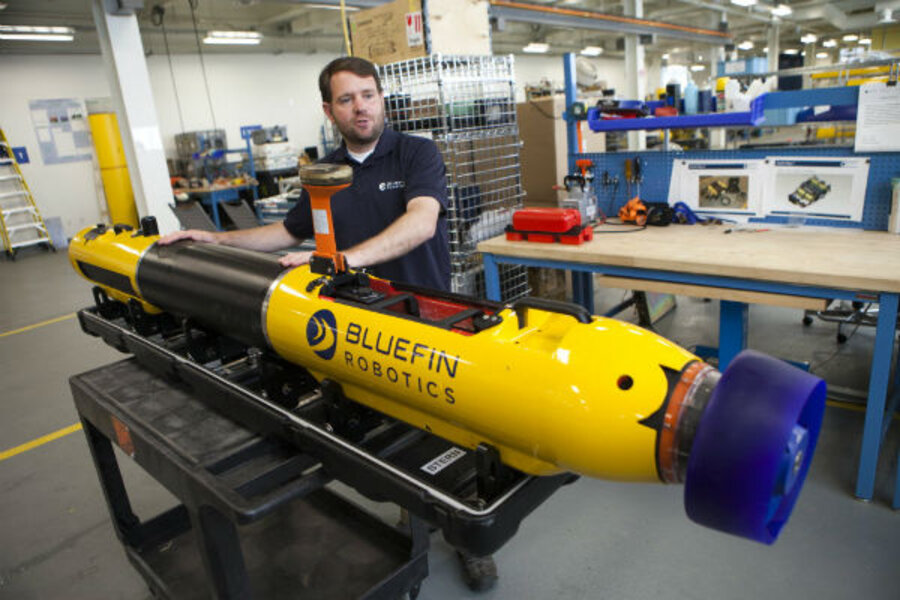Malaysia Airlines Flight MH370: US underwater drone takes over search
Loading...
The multinational investigators searching for missing Malaysian airliner MH370 are taking the search underwater with an American-made undersea drone.
Search vessels detected some promising pings this month believed to be produced by the missing jet's black boxes. However, those signals went silent several days ago, leading investigators to believe that the flight recorders' batteries have finally reached the end of their life.
The US Navy’s Bluefin-21, an autonomous underwater vehicle manufactured by Bluefin Robotics in Quincy, Mass., is picking up the search where ping locators left off.
“Today is Day 38 of the search,” search coordinator Angus Houston said during a news conference. “We haven’t had a single detection in six days, so I guess it’s time to go underwater.”
The Navy shipped the Bluefin-21 to Perth, Australia, in late March in preparation for this eventuality. The yellow submarine has been launched from the Royal Australian Navy ship Ocean Shield.
While the previously captured pings and a recently discovered oil slick have helped to narrow down the search area, Mr. Houston notes that there is no guarantee that the Bluefin-21 will be able to find the missing plane.
“I would caution you against raising hopes that the deployment of the autonomous underwater vehicle will result in the detection of the aircraft wreckage. It may not,” he said. “However, this is the best lead we have, and it must be pursued vigorously. Again, I emphasize that this will be a slow and painstaking process.”
The 25-foot-long, 21-inch-diameter sub is equipped with a side-scan sonar capable of creating a 3-D map of the ocean floor while "flying" 50 meters above the bottom of the sea, Bluefin's director of marine operations, Will O'Halloran, told the Monitor during a tour of the company's Quincy plant late last month.
The sleek, pontoon-like body of the sub houses communication systems, guidance controls, a removable data storage compartment (which Mr. O'Halloran described as a "big USB thumb drive") and sonar and optical-camera surveillance equipment. Oil-filled bladders protect the equipment within the sub from the immense pressure of the deep sea, which Bluefin CEO David Kelly says "is equivalent to a Cadillac Escalade balanced on your thumbnail."
Operators aboard a ship can program search parameters for the Bluefin-21, US Navy spokesman Chris Johnson told the Monitor in a March 27 interview. Its first mission will be to search a 40-square-kilometer (15-square-mile) area of the seafloor.
“It operates within a preprogrammed box looking for a sonar return – something that looks out of place that may resemble an aircraft piece,” Mr. Johnson said. “We then bring [the sub] up, and we plug [the removable data compartment] into a processor, download that sonar data, and review if there is something that warrants an additional search.”
That process takes a full 24 hours and generates about 500 gigabytes of data, Mr. Kelly told the Monitor.
If the sub does detect something that resembles part of an aircraft, operators will send it back down again with a high-resolution optical camera and strobe light to make sure that the object identified is not just another piece of garbage cluttering up the ocean.
Bluefin originally developed the sub to aid in oceanographic research, and various versions of the Bluefin-21 have since been used in oil and gas exploration and Defense Department reconnaissance, Kelly said.
Its first cruises surveyed changes in the Antarctic ice shelf as part of global climate change research.
The US Navy contractor Phoenix International obtained the Bluefin-21 about two years ago and used it in the successful recovery of an Air Force F-15 off the coast of Japan, Johnson said.
• Material from the Associated Press was used in this report.








